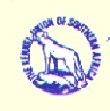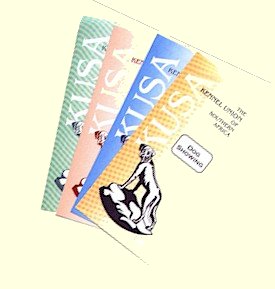| |
The future is bright
 In May
1998, agility was born in South Africa. A handful of people realised that in order to introduce
an additional, but not alternative discipline into the world of 'dogdom,' required that an
organised and forward planning programme be seriously considered and implemented. Peter Lewis,
an internationally accepted examiner, trainer and judge from the United Kingdom and one of the
founders of the sport, was asked to provide an official course and examination in agility to
interested persons wishing to become judges in the sport. Lionel Noik, Chairman of Gauteng
Agility Club explains. In May
1998, agility was born in South Africa. A handful of people realised that in order to introduce
an additional, but not alternative discipline into the world of 'dogdom,' required that an
organised and forward planning programme be seriously considered and implemented. Peter Lewis,
an internationally accepted examiner, trainer and judge from the United Kingdom and one of the
founders of the sport, was asked to provide an official course and examination in agility to
interested persons wishing to become judges in the sport. Lionel Noik, Chairman of Gauteng
Agility Club explains.
Peter Lewis devised an intensive three day (and night)
course which was given in both the Cape Province and Gauteng. It culminated in 40 out of the 54
people who took it being awarded their judges 'licence.' Twelve were from Gauteng.
 This
was merely the first step in a long process, which in my opinion will take at least two years
if not longer to develop. I am sure all will agree, that in order to be a 'good' judge,
requires more than a set of paper credentials. Reading books and analysing videotapes on
judging techniques, designing courses, scribing, timing, scoring and stewarding are all allied
to becoming a competent judge. Menial, some might say, boring others might contend, perhaps so,
but nevertheless necessary. Dressing smartly, behaving appropriately, exuding confidence and
authority in the ring are all integral elements of being a judge. Other aspects of equal
importance include practical training at grassroots level and attending regular discussion
groups with other judges. In the absence of the above factors being considered and implemented,
progress to gain the recognition and respect of both the local and international community will
not be achieved. This
was merely the first step in a long process, which in my opinion will take at least two years
if not longer to develop. I am sure all will agree, that in order to be a 'good' judge,
requires more than a set of paper credentials. Reading books and analysing videotapes on
judging techniques, designing courses, scribing, timing, scoring and stewarding are all allied
to becoming a competent judge. Menial, some might say, boring others might contend, perhaps so,
but nevertheless necessary. Dressing smartly, behaving appropriately, exuding confidence and
authority in the ring are all integral elements of being a judge. Other aspects of equal
importance include practical training at grassroots level and attending regular discussion
groups with other judges. In the absence of the above factors being considered and implemented,
progress to gain the recognition and respect of both the local and international community will
not be achieved.
The Present
A problem presently being experienced in agility is a shortage of specialist helpers or
assistants. Volunteers would be required to undergo a morning course in efficient scribing and
manual scoring techniques. This would enable clubs interested in holding agility at their shows
to have the necessary people qualified to carry out the duties required. It is important to
remember that agility, being an international sport, requires international standards at all
times.
 The procedures in becoming a scribe are not difficult and can become quite enjoyable, as
learners become immersed in what is expected of the dogs, their handlers, and the judge. It
would be most welcome and refreshing if members of other disciplines came forward and offered
their services. This would promote a better understanding amongst clubs as to the needs of an
agility event, in order for it to run smoothly and efficiently. To merely invite agility along
for the ride, without being fully acquainted with the requirements necessary, is inviting
confusion, and a consequent drop in entries at shows.
The procedures in becoming a scribe are not difficult and can become quite enjoyable, as
learners become immersed in what is expected of the dogs, their handlers, and the judge. It
would be most welcome and refreshing if members of other disciplines came forward and offered
their services. This would promote a better understanding amongst clubs as to the needs of an
agility event, in order for it to run smoothly and efficiently. To merely invite agility along
for the ride, without being fully acquainted with the requirements necessary, is inviting
confusion, and a consequent drop in entries at shows.
The Future
Having discussed the past and present, the main question to be answered is: What of the future
of agility in our country or in our province?
When one believes in the product being sold, it becomes
that much simpler to sell. In the case of agility and its saleability, a few concrete facts
should be considered.
In the short space of fifteen months since agility having
made its appearance, one hundred and forty one agility record cards have been issued to
aspirant competitors in our province. Nationally the figure is approximately three hundred.
Agility has been widely publicised both on radio, television and other media sources, and will
continue to be marketed in this fashion.
Contacts have been made with various organisations at
whose public events agility has been featured. These organisations have requested that agility
return in the year 2000. Public interest has been stimulated to such a degree, that enquiries
for agility training are continuously being received.
If adequate procedures and standards are introduced at
shows, I have no doubt that numbers in excess of sixty-seven entries at the recent Rand Easter
Show event will easily be surpassed. A "win-win" situation will be achieved. The clubs will
obtain greater numbers at their shows, and in return the competitors will receive judging of
the highest standard.
In conclusion, in order to accomplish what has been
discussed above, requires tolerance, patience, good manners at shows, sportsmanlike behaviour
at all times and respect for judges decisions, (even if on occasions, these are at variance
with what some competitors might believe). These qualities need to be encouraged within our
province. At a later stage attention could be given to sending teams to world events.
The future for agility is bright.
Let us keep it that way.
Photo credit: Annie & Bryn by Mrs V. I. Meurig-Evans (Cover
Dogs in South Africa)
| |
|